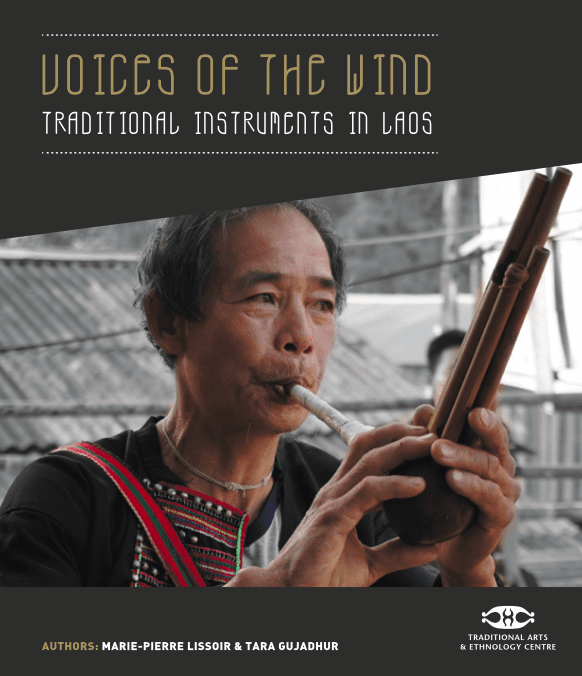No products in the cart.
SPECIAL EXHIBITION RESOURCES
“We take bamboo and we take trees and we turn them into traditional music.”
– Neng Chue Vang, Hmong instrument maker and musician
Wind instruments form the most varied musical family in Laos. They include the emblematic mouth organ khaen, but also the dadoula (a flute), the tchudu (a trumpet), and even simple leaves. Wind instruments can mimic language, as is the case of the Hmong raj nplaim, or communicate across long distances, like the buffalo horn of the Akha. But the deceptively simple-looking instruments have generally been overlooked as an important part of Laos’ cultural heritage, until now.
“Voices of the Wind: Traditional Instruments in Laos,” is the result of over two years of research and curation by Belgian ethnomusicologist, Dr. Marie-Pierre Lissoir, and TAEC. Dr. Lissoir performed her PhD research in remote Houaphan Province on Tai Dam khap singing, and returned to Laos to work for TAEC and further their research into music.
Dr. Lissoir says, “while many of the wind instruments look like a simple bamboo stick with holes, they can create an incredible variety of sounds and timbres, used for rituals, entertainment or courting. Many instruments are even used to communicate, whether to pass a message through the mountains with the powerful sound of a leaf, or to express one’s love with the discreet buzz of the jaw harp. Speaking about music is speaking about life in Laos, its changes and challenges.”

